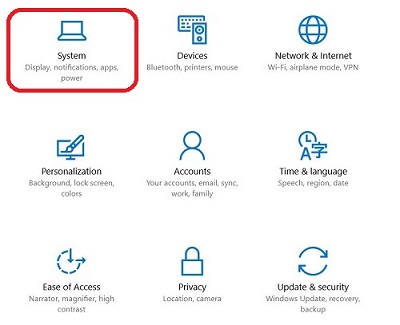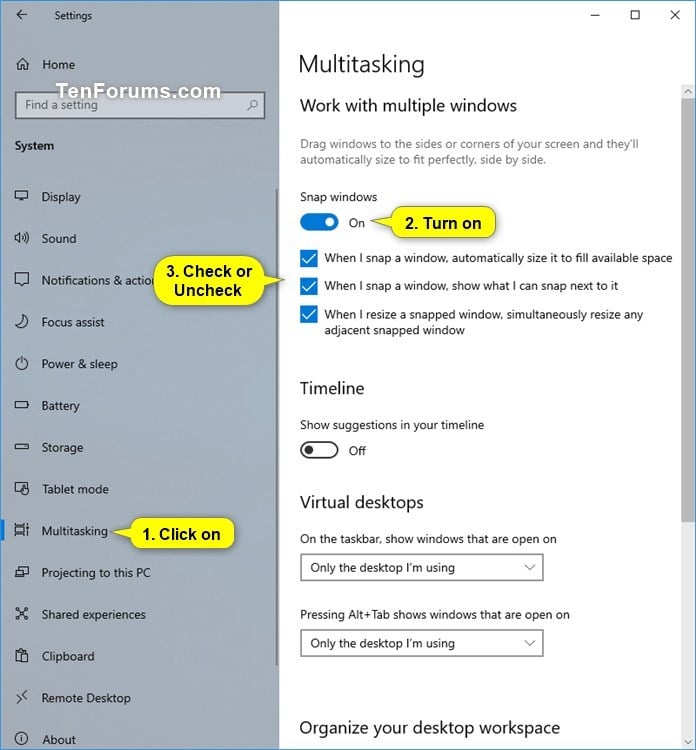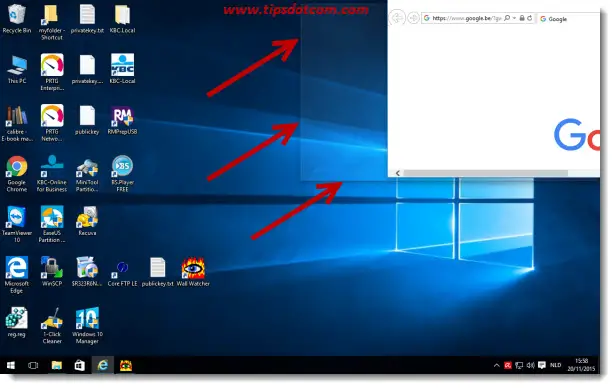

Right-click on Explorer key and select New -> Key option. Now you’ll need to create new key under Explorer key. Now type regedit in RUN box and press Enter. Press WIN+R keys together to launch RUN dialog box.

If you also want to customize UI of Alt+Tab, Task View and Snap Assist screens, check out following simple steps:

You’ll be able to change thumbnails size, grid margins, icons size, hover color, background window appearance, background transparency level and much more in these views.
Windows 10 enable snap assist windows 10#
Just drag-n-drop a program window to left-middle corner of your screen and Snap Assist will launch automatically to help you in using Aero Snap feature.īy default Windows 10 doesn’t allow to customize UI (User Interface) or look-n-feel of these multi tasking views but today in this tutorial, we are going to share lots of Registry tweaks which will help you in customizing all these views UI. Snap Assist view helps you in arranging running programs windows on screen by automatically showing a list of all running programs when you try to use Aero Snap feature. You can access Task View by pressing WIN+Tab keys together or by clicking on Task View icon on Taskbar. Task View is used to create multiple virtual desktops and each virtual desktop contains its own running programs list. You can access this view by pressing ALT and TAB keys together on your keyboard. Task View (also known as Virtual or Multiple Desktops)Īlt+Tab view is used to see and switch between running programs.If you find yourself missing the Snap feature, you can turn it back on at any time by heading back to Settings > System > Multitasking and turning the aforementioned option back to On.In Windows 10 operating system, there are 3 main components present to use Multi Tasking View: Just set it to Off and Snap will be immediately disabled. Its sub-features address options like Snap Assist, but if you want to turn off snapping entirely, that top option is the one you’re looking for. This option, which is enabled by default, is what controls the overall Snap feature in Windows 10. Next, select Multitasking from the list of sections on the left, and then find the option labeled Arrange windows automatically by dragging them to the sides or corners of the screen.

Here’s how.įirst, launch the Settings app, found by clicking on the Start Button (the gear icon) or by searching for it via Cortana. For these folks, the good news is that it’s easy to turn off Snap in Windows 10. Some users, especially those with multi-monitor configurations, may not like it when Windows automatically messes with their desktop window layout. This behavior is called Snap, and it’s a helpful feature that has been part of Windows in one form or another since Windows 7. For example, dragging and releasing on the right or left side of the screen will expand the window to fill exactly half of that side of the screen, dragging to the top of the screen will fill the entire screen, and dragging to one of the corners will expand the window to fill just that corner. If you let go of the mouse at this point, the window you were dragging will automatically expand depending on the location of where you dragged. In Windows 10, when you drag an application or system window to the edge of the screen, you’ll see a circular animation appear at your mouse cursor and a window outline expand to fill that portion of the screen.
Windows 10 enable snap assist how to#
Quick Tip: How to Turn Off Snap in Windows 10


 0 kommentar(er)
0 kommentar(er)
